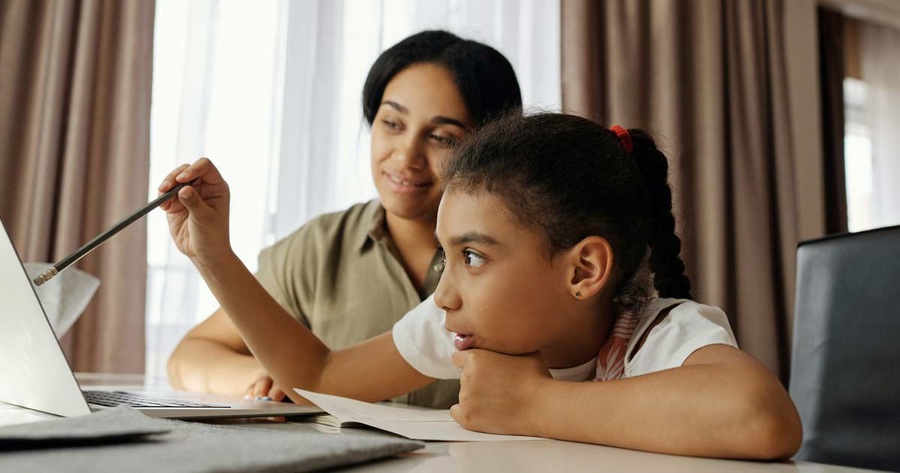As March merged into spring, programs took a deep breath and devised plans to move their sessions online.
Implementing best practices in online and virtual learning became a must for educators and afterschool instructors. Frisch and Green (2020) suggested using icebreakers to make participants more comfortable. Assigning a facilitator to encourage audio and video participation during web conferencing would help run more effective virtual meetings.
Choosing the most appropriate video conferencing tools would be crucial for students.
Cohen and de Looper (2020) recently found Zoom more comprehensive than Google Meet, yet some students and organizations are more comfortable and proficient using Meet. Programs may use a combination of web conferencing options. In these cases, students may be asked to go into sessions where teachers are waiting for them in multiple sites—Zoom, Google Meet, WebEx and others. This can be confusing to students and families and result in a disconnect, despite having best practices, access to technology tools, and virtual platforms in place.
Thompson and Watson (2020) reported virtual attendance issues across America last spring. There is a challenge in encouraging more students to attend and stay in virtual sessions long enough to experience meaningful programming. One possible solution? Flip the program to make it easier for students and families to join and stay in the sessions.
This goes beyond promoting and welcoming participants into virtual sessions. It involves purposely directing multiple fundamental programming aspects to meet students' and families' needs.
Find out which virtual platform is most user-friendly to students and families.
Many students today have Chromebooks. These may function better with Meet than with Zoom, even if Zoom is considered by some to be the more developed conferencing tool (Cohen & de Looper, 2020).
Consider the programming time frame.
Which start and end times are most feasible for students and families? A summer program with a 10 a.m. start time might be better attended than one beginning at 8 a.m. If there is uncertainty, programs could survey families for feedback.
Consider having the students join one session.
This is overseen by a host and attended by teachers who cycle in and out of the program, instead of having students enter and exit various sessions run by their instructors.
To better ensure students stay connected and remain accounted for, a host teacher or administrator can set up a base session where students stay as long as the virtual platform allows. Meet and Zoom have been offering school organizations extended session times during the COVID-19 pandemic. Once students are invited into their session through a Zoom email invitation, Google Classroom Meet Link, or Calendar event, they are greeted by the host and their current instructor. Before the current session ends, the incoming teacher joins the host and first teacher to ease the transition and continue the program, without jumping to a new meeting site. The second instructor begins the next session and the schedule continues accordingly until the end of the day. The student cohort stays in one session and sees teachers cycling in an out, while always in the presence of the host staff member.
Although there is no perfect solution to providing virtual programming to students and families, it is important to make the process as convenient as possible. While the host helps break the ice, facilitate discussions, and encourage full participation through audio and video, the instructor focuses on content and connections (Frisch & Green, 2020).
Flipping the virtual afterschool program can put students and families first—increasing and maintaining attendance. To provide the remote learning best meeting participants' needs, programs should focus on making it easier for students and families to access, join, and remain in a dedicated virtual learning setting.
Written by Scott Marakovits, Ed.D., Curriculum Department, Salem County (New Jersey) Vocational & Technical Schools. NAA Executive member.
References
Cohen, S. & de Looper, C. (2020, July 30). We compared Google Meet and Zoom to see which is better for remote working and learning-and Zoom is the more comprehensive video conferencing tool. Business Insider. https://www.businessinsider.com/google-meet-vs-zoom
Frisch, B. & Greene, C. (2020, April 16). What it takes to run a great virtual meeting. Harvard Business Review. https://hbr.org/2020/03/what-it-takes-to-run-a-great-virtual-meeting.
Thompson, C. & Watson, J. (2020, April 17). Virus forced schools online, but many students didn't show. ABC News. https://abcnews.go.com/Health/wireStory/virus-forced-schools-online-students-follow-70205874
Authors' Websites
https://www.linkedin.com/in/scottmarakovits/
https://padlet.com/smarakovits1/digitaltoolcerts
https://wke.lt/w/s/bolTDT



